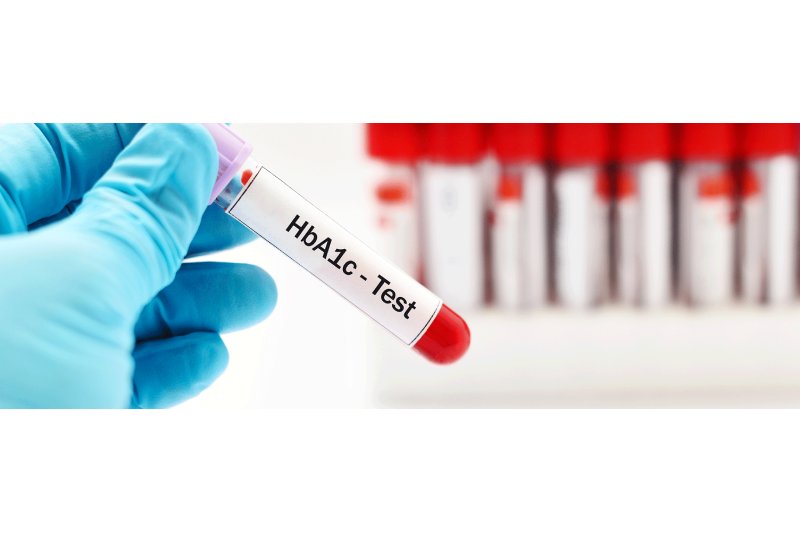HbA1c testing, also known as glycated hemoglobin or A1c testing, is a cornerstone of diabetes management. This test provides a comprehensive picture of your average blood sugar levels over the past two to three months, making it a crucial tool in the effective monitoring and treatment of diabetes. Understanding the importance of HbA1c testing can empower individuals with diabetes to take control of their health and prevent complications.
What is HbA1c?
Hemoglobin is a protein in red blood cells that carries oxygen throughout the body. When blood sugar levels are high, glucose attaches to hemoglobin, forming glycated hemoglobin (HbA1c). The HbA1c test measures the percentage of hemoglobin that is glycated, providing an average blood glucose level over the past 8-12 weeks.
Why is HbA1c Testing Important?
- Long-Term Blood Sugar Control
- Unlike daily blood sugar tests, which provide a snapshot of your blood glucose level at a single point in time, HbA1c testing gives a long-term overview. This helps in assessing how well your diabetes management plan is working over an extended period.
- Predicting Complications
- Consistently high HbA1c levels are associated with an increased risk of diabetes-related complications, including cardiovascular disease, neuropathy, retinopathy, and nephropathy. Regular testing can help predict and prevent these complications by allowing for timely interventions.
- Assessing Treatment Efficacy
- HbA1c testing is essential for evaluating the effectiveness of diabetes medications, lifestyle changes, and other interventions. If your HbA1c levels are not within the target range, it may indicate the need for adjustments in your treatment plan.
- Setting and Achieving Goals
- Setting an HbA1c target in consultation with your healthcare provider can help you manage your diabetes more effectively. Most people with diabetes aim for an HbA1c level below 7%, though individual targets may vary based on factors like age, duration of diabetes, and presence of other health conditions.
How Often Should You Test HbA1c?
For most individuals with diabetes, healthcare providers recommend HbA1c testing every 3 to 6 months. However, the frequency may vary based on individual circumstances, including how well blood sugar levels are controlled and any recent changes in medication or lifestyle.
Interpreting HbA1c Results
- Below 5.7%: Normal (non-diabetic)
- 5.7% to 6.4%: Prediabetes (increased risk of diabetes)
- 6.5% and above: Diabetes
These ranges are general guidelines, and it’s essential to discuss your specific target with your healthcare provider.
Improving Your HbA1c Levels
If your HbA1c levels are higher than desired, consider these strategies to help lower them:
- Healthy Eating
- Focus on a balanced diet rich in whole grains, lean proteins, vegetables, and fruits. Avoid excessive sugar and refined carbohydrates.
- Regular Exercise
- Aim for at least 150 minutes of moderate-intensity aerobic exercise per week, combined with strength training exercises.
- Medication Adherence
- Take your diabetes medications as prescribed and discuss any side effects or concerns with your healthcare provider.
- Monitoring Blood Sugar
- Regularly monitor your blood glucose levels at home to understand how different foods, activities, and medications affect your blood sugar.
- Lifestyle Changes
- Manage stress, avoid smoking, and limit alcohol intake to improve overall health and blood sugar control.
Conclusion
HbA1c testing is a vital component of diabetes care, providing critical insights into long-term blood sugar control and helping to prevent complications. By understanding and monitoring your HbA1c levels, you can work with your healthcare provider to optimize your diabetes management plan and improve your overall health. Regular HbA1c testing, combined with healthy lifestyle choices and adherence to treatment, can significantly enhance your quality of life and reduce the risk of diabetes-related complications.

 Diabetology2 weeks ago
Diabetology2 weeks ago
 Diabetology1 week ago
Diabetology1 week ago
 Diabetology5 days ago
Diabetology5 days ago
 Diabetology7 days ago
Diabetology7 days ago
 Diabetology7 days ago
Diabetology7 days ago
 Diabetology4 days ago
Diabetology4 days ago
 Diabetology3 days ago
Diabetology3 days ago
 Diabetology1 day ago
Diabetology1 day ago










